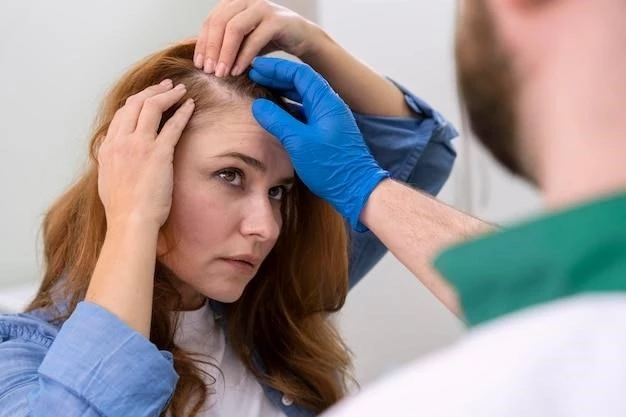Managing Dissecting Cellulitis of the Scalp
When it comes to managing Dissecting Cellulitis of the Scalp, understanding the condition is crucial. From symptoms to treatment options, this comprehensive guide will offer insights on coping with this distressing inflammatory disease affecting the hair follicles and skin on the scalp.
Understanding Dissecting Cellulitis of the Scalp
Dissecting Cellulitis of the Scalp is a chronic inflammatory disease that primarily affects hair follicles and leads to the development of painful lumps, abscesses, and recurrent episodes of infection on the scalp. This condition is associated with bacterial infections, resulting in the formation of abscesses that can cause a swollen scalp and significant discomfort.
If you suspect you have Dissecting Cellulitis of the Scalp, it is essential to seek medical attention promptly. Early diagnosis and treatment can help manage symptoms effectively and prevent complications. Understanding the nature of this skin disorder is crucial in navigating the challenges it presents. Stay informed, follow your healthcare provider’s guidance, and explore the available treatment options to address this condition effectively.
Symptoms of Dissecting Cellulitis
Recognizing the symptoms of Dissecting Cellulitis of the Scalp is crucial for early detection and management of this condition. Symptoms may include the formation of painful lumps or nodules on the scalp, which can progress to abscesses that may drain pus. In some cases, individuals may experience recurrent episodes of infection, leading to a chronically inflamed and swollen scalp.
Other common symptoms of Dissecting Cellulitis include redness, tenderness, and warmth in the affected area. Hair loss over the lumps or abscesses may also occur. If you notice any of these symptoms, consult a healthcare provider promptly for an accurate diagnosis and appropriate treatment. Early intervention is key to managing this challenging condition effectively and improving quality of life.
Diagnosis of Dissecting Cellulitis
Diagnosing Dissecting Cellulitis of the Scalp typically involves a thorough evaluation by a healthcare professional. Your doctor may perform a physical examination of the scalp to assess the presence of painful lumps, abscesses, or other skin abnormalities. In some cases, a tissue biopsy may be recommended to confirm the diagnosis.
Additionally, laboratory tests, such as wound cultures, may be conducted to identify the specific bacteria causing the infection. Imaging studies like ultrasounds or CT scans can help determine the extent of the disease and assess any underlying inflammation or damage to the scalp tissues. A comprehensive diagnostic approach is essential to differentiate Dissecting Cellulitis from other conditions with similar symptoms and tailor an appropriate treatment plan.
Treatment Options
Managing Dissecting Cellulitis of the Scalp often requires a comprehensive approach to address the inflammatory nature of the condition. Treatment options may include antibiotic therapy to target and eradicate the bacterial infection causing the abscesses and inflammation. Your healthcare provider may prescribe oral or topical antibiotics to help control the infection and reduce symptoms.
In severe cases or when conservative measures are ineffective, surgical intervention may be necessary. Surgical procedures such as incision and drainage of abscesses, debridement of affected tissue, or even excision of damaged areas of the scalp may be performed to alleviate pain, promote healing, and prevent recurrent episodes of infection.
It is essential to follow your healthcare provider’s guidance closely and adhere to the prescribed treatment plan to effectively manage Dissecting Cellulitis. Regular monitoring of the scalp condition, maintaining good hygiene practices, and seeking prompt medical attention for any worsening symptoms are crucial steps in the treatment process.
Surgical Intervention
In cases of Dissecting Cellulitis of the Scalp where conservative treatments are insufficient, surgical intervention may be recommended to address the chronic nature of the condition and promote healing. Surgical procedures can help manage the abscesses, reduce inflammation, and prevent recurrent episodes of infection.
Common surgical interventions for Dissecting Cellulitis of the Scalp include incision and drainage of abscesses to relieve pressure, remove infected fluids, and facilitate healing. Debridement of damaged tissue may be performed to promote healthy tissue growth and reduce the risk of complications. In more severe cases, excision of affected areas of the scalp may be necessary to address widespread inflammation and infection.
Before undergoing surgical intervention, consult with a healthcare provider to discuss the risks, benefits, and expected outcomes of the procedure. Follow post-operative care instructions diligently to support the healing process and reduce the likelihood of complications. Surgical intervention, when performed by experienced professionals, can significantly improve the management of Dissecting Cellulitis and enhance the overall quality of life for individuals affected by this challenging condition.

Managing Chronic Dissecting Cellulitis
Managing chronic Dissecting Cellulitis of the Scalp requires a long-term strategy to control symptoms, prevent flare-ups, and improve overall scalp health. Consistent adherence to treatment plans recommended by healthcare professionals is vital in managing this persistent condition effectively.
Regular follow-up appointments with your healthcare provider are essential to monitor the progress of treatment, adjust medications if needed, and address any new symptoms or concerns. Keeping a journal of symptoms, treatments, and any triggers that may exacerbate the condition can help you and your healthcare team better understand your individual experience with chronic Dissecting Cellulitis.
Additionally, maintaining good scalp hygiene, avoiding harsh hair products or styling techniques that may irritate the skin, and managing stress levels are important aspects of managing this chronic inflammatory disease. Engaging in stress-reducing activities, such as mindfulness techniques or hobbies you enjoy, can also contribute to overall well-being and potentially reduce the frequency and severity of flare-ups.
Prevention and Lifestyle Changes
Preventing Dissecting Cellulitis of the Scalp and managing its symptoms effectively often involves implementing lifestyle changes that support scalp health and overall well-being. Simple yet impactful practices can help reduce the risk of flare-ups and improve the management of this challenging inflammatory condition.
Some preventive measures and lifestyle changes to consider include maintaining good scalp hygiene by washing regularly with a gentle shampoo and avoiding harsh chemicals or irritants that may aggravate the skin. Protecting the scalp from trauma or injury, such as wearing protective headgear during sports or activities, can also prevent exacerbation of symptoms.
Incorporating a balanced diet rich in nutrients, staying hydrated, and getting regular exercise can contribute to better overall health, potentially supporting the body’s ability to manage inflammation and reduce the severity of symptoms associated with Dissecting Cellulitis. Prioritizing stress management techniques, adequate rest, and seeking emotional support when needed are essential aspects of a holistic approach to preventing and managing this chronic scalp condition.
Coping with Dissecting Cellulitis
Coping with Dissecting Cellulitis of the Scalp can be challenging, both physically and emotionally. It is essential to develop coping strategies that help you manage the symptoms, navigate the impact of the condition on your daily life, and maintain a positive outlook despite the challenges you may face.
Seeking support from healthcare providers, support groups, or mental health professionals can provide valuable guidance, reassurance, and coping tools to help you deal with the physical discomfort and emotional aspects of living with Dissecting Cellulitis. Open and honest communication with your healthcare team about your concerns, questions, and treatment preferences is crucial in ensuring that your needs are met and your overall well-being is supported.
Engaging in self-care practices, such as relaxation techniques, mindfulness exercises, or enjoyable hobbies, can promote mental wellness and help you cope with stress or anxiety that may accompany living with a chronic skin condition. Remember that you are not alone in your journey, and reaching out for help and support can make a significant difference in how you cope with Dissecting Cellulitis.
Conclusion
In conclusion, managing Dissecting Cellulitis of the Scalp requires a comprehensive approach that combines medical treatment, lifestyle modifications, and coping strategies to address the symptoms and challenges associated with this chronic inflammatory disease. By understanding the nature of the condition, adhering to treatment plans, and seeking support when needed, individuals can effectively manage Dissecting Cellulitis and improve their quality of life.
Remember that early diagnosis, prompt medical intervention, and consistent follow-up care are key components of managing this challenging scalp condition. By working closely with your healthcare provider, adopting scalp-friendly practices, and prioritizing your physical and emotional well-being, you can navigate the complexities of Dissecting Cellulitis with resilience and determination.
Stay informed, stay proactive in your care, and remember that each step you take towards managing Dissecting Cellulitis is a step towards better health and wellness. With the right tools, support, and mindset, you can effectively cope with the impact of Dissecting Cellulitis on your scalp and lead a fulfilling life despite its challenges.
